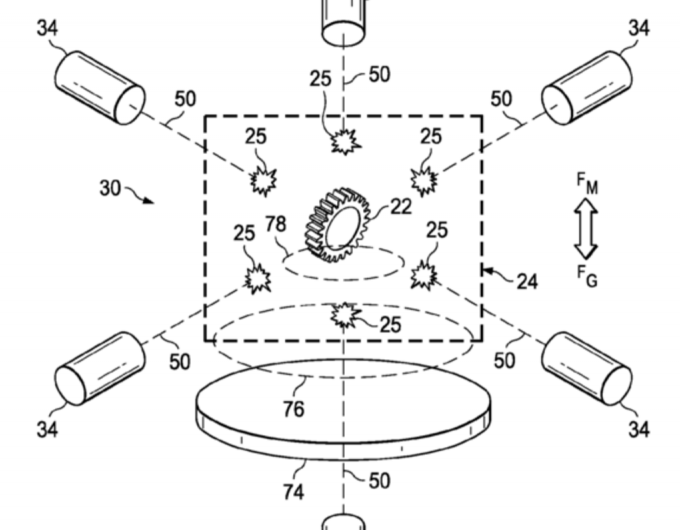Has Boeing been exploring the printing of 3D printing of levitating objects? Yes, Boeing has patented technology to 3D print objects while levitating in space. PatentYogi has presented a video that explains what Boeing had in mind in their patent application, first filed in 2014.
Multiple 3d printers are used to simultaneously print various features, said PatentYogi. The printing material has diamagnetic properties, it said. Tyler Koslow in 3D Printing Industry, like other 3D printing observers reacting to the patent news, found the idea surprising. He wrote that "This technology is like one I've never personally seen before."
Koslow said the aircraft manufacturer was driving innovation further with such a technology aimed at printing objects floating in midair. PatentYogi said that when super-cooled, the printing material becomes a super-conductor.
How it works: A nugget of the printing material is ejected into space; magnetic levitation holds it in place; further deposition begins. That is, the magnetic fields created hold that first bit of 3D-printed material in place, and that bit is called the "nugget," which is then built upon by multiple printers within the process.
In discussing the benefits of such an approach, Koslow said: (1) This would be a departure from bottom-up printing. With the nugget held up by magnetic fields, the printers can deposit materials on either side of the base. (2) with magnetic fields the nugget can be rotated in any direction. That means one can get more complex shapes and features within the 3D printed object. (3) with multiple 3D printers used at once, the print speed is greatly increased.
PatentYogi said even acoustic levitation can be used to levitate the nugget. Clare Scott in 3DPrint.com said the "method of levitation involves generating acoustic waves so powerful that they force the nugget into the air; it's then held in the air by an acoustic reflector that reflects the sound waves and creates a 'standing wave pattern' that keeps the part in place while the print heads do their thing."
Interestingly, some reader comments reacted to the description as cool yet many thought the patent descriptions sounded more like science fiction.
One such comment said the patent sounded as if it involved zero scientific engineering principles; another called the concept fairly ludicrous.
John Biggs, East Coast Editor of TechCrunch, weighed in. Biggs' reaction was, "the current visualization – little balls that turn into smooth surfaces – makes no sense. All that is clear is that they're using an additive system 'in space' which seems to suggest that the print heads have to be closer to the object than they are in the video." At the same time, Biggs said, "to have multiple heads printing one object at the same time means far faster print speeds, better detail, and larger print sizes. This is some serious sci-fi stuff."
Scott in 3DPrint.com commented how "I can't wrap my head around it, but Boeing is very serious." Scott added that "this process could do away with the limitations of traditional 3D printing. And that would mean a technology that is, well, limitless."
© 2016 Tech Xplore























